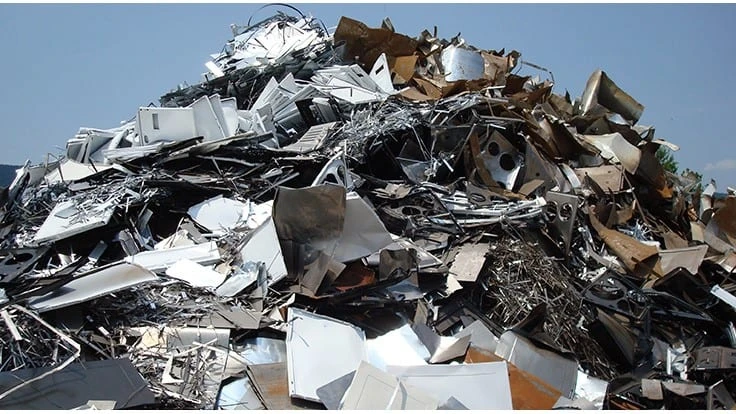
Photo by Brian Taylor.
Steel mills ramping up melt shop activity in Mexico and South America are outbidding Turkish buyers for scrap in several regions of the United States, according to New York-based trader and consultant Nathan Fruchter.
“The export market is on fire, and it even caught me by surprise a little bit,” says Fruchter, who accurately predicted the onset of higher prices caused by the ripple effect of ferrous scrap supply constraints this spring.
In late November, inadequate supply is again a problem in many parts of the U.S., thanks to a combination of renewed COVID-19-related restrictions, winter weather and the Thanksgiving holiday.
“December can often be tight,” says Fruchter, pointing to the seasonal factors, “but now I don’t think you can buy much in terms of bulk cargo on the East Coast for December shipment.”
Buyers of containerized ferrous scrap don’t necessarily have it any easier, the trader says, as container and booking shortages are a factor in several U.S. and Canadian port regions on both the East and West Coasts.
In the first week of December, it has become clear domestic buyers will likewise pay higher prices for their monthly scrap purchases. On Dec. 2, Davis Index reported mills in the Detroit region were paying up to $70 per ton more for some grades compared with November, and that buyers and sellers “expect a minimum $50 to $60 per ton upsurge in other Midwest regions.”
According to Fruchter, many Turkish buyers have shifted their attention to the lower priced European and Black Sea markets, but those options are not available to Central and South American mills. Buyers for these mills have been willing to pay up to $20 or $30 more per ton to secure supplies from U.S. shippers, to feed furnaces in their rebounding steel sectors.
“Buyers from Mexico, Peru, Ecuador and Brazil are all out there buying en masse,” says Fruchter, principal of Idoru Trading. “Over the years we have seen all these countries buying scrap, some on a regular basis, others on and off, and some even—like Brazil—often off,” he says. “But I cannot recall seeing so many LatAm buyers converging simultaneously on the market during the same month.”
All this comes as a result of the economies and the steel sectors in Latin America having rebounded from their COVID-19-related shutdowns and downturns. In doing so, they have absorbed scrap and other metallics and shopped globally for semi-finished and finished steel, influencing steel pricing in places far and wide.
Mills in those nations, Fruchter says, “are buying domestic scrap in their own markets, but there simply isn’t enough to go around. So, they look to the U.S., and are offering figures considerably higher than what the Turks are able to pay.”
In the December market, he says that while East Coast and Gulf Coast shippers entertain the higher Latin American offers, for West Coast exporters, “Prices in Asia, from nations including Bangladesh and Vietnam, are strong enough, so they keep looking in that direction.”
A Dec. 3 online report from the United Kingdom-based Seatrade Maritime News described a “bull market in Bangladesh,” with prices there nearing $400 per long ton for containerized scrap. The surging market was likely to mean “recycling yards in both India and Pakistan will have to raise their price ideas.”
Latest from Recycling Today
- BMW Group, Encory launch 'direct recycling’ of batteries
- Loom Carbon, RTI International partner to scale textile recycling technology
- Goodwill Industries of West Michigan, American Glass Mosaics partner to divert glass from landfill
- CARI forms federal advocacy partnership
- Monthly packaging papers shipments down in November
- STEEL Act aims to enhance trade enforcement to prevent dumping of steel in the US
- San Francisco schools introduce compostable lunch trays
- Aduro graduates from Shell GameChanger program





